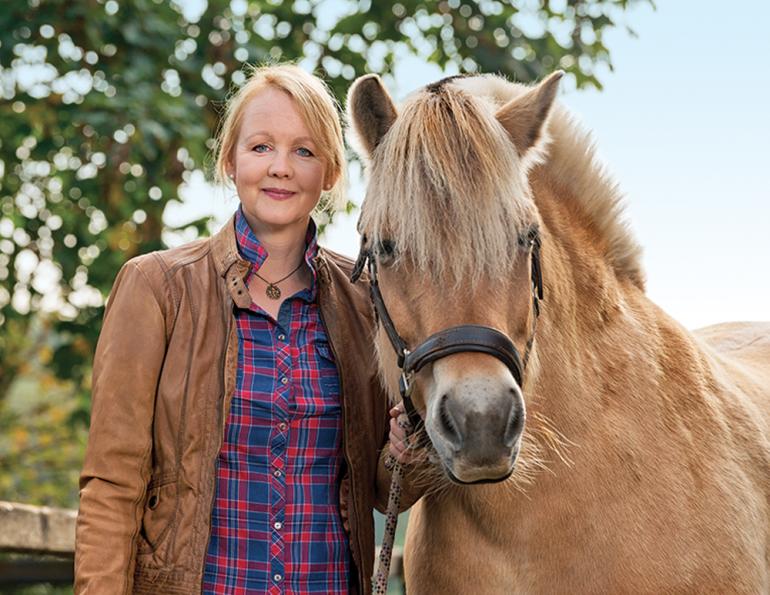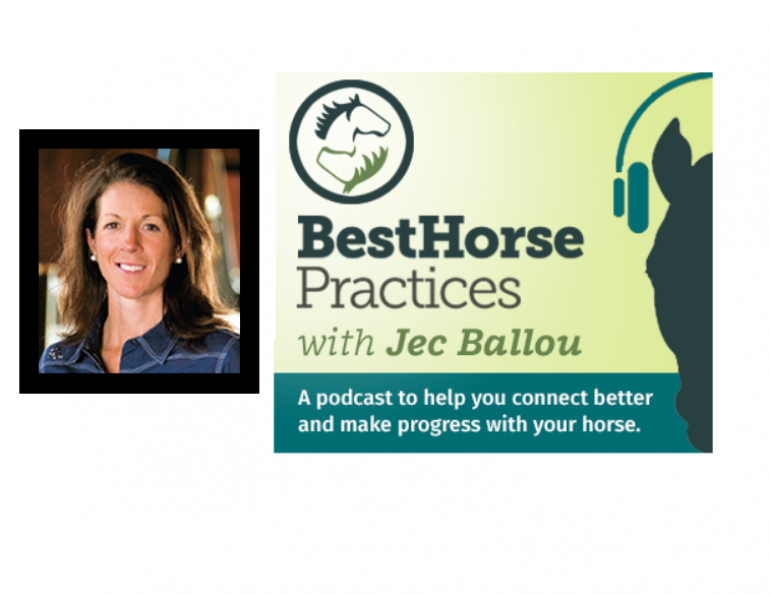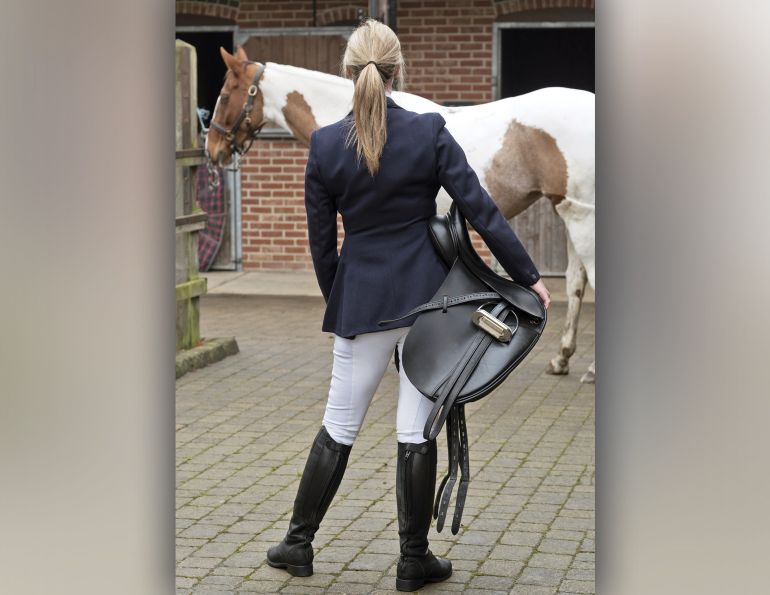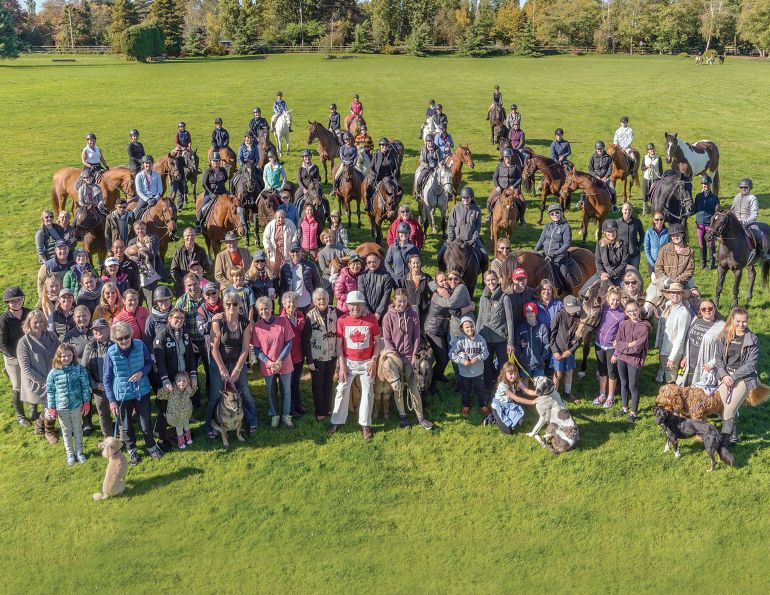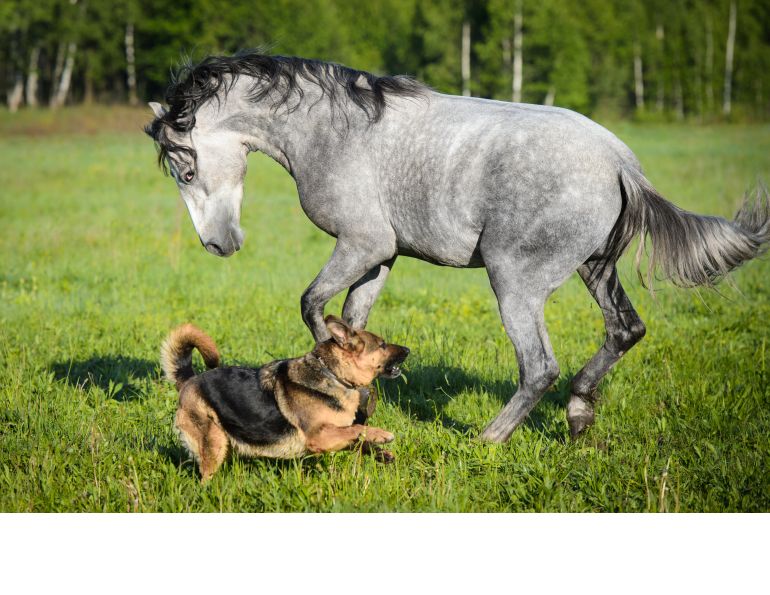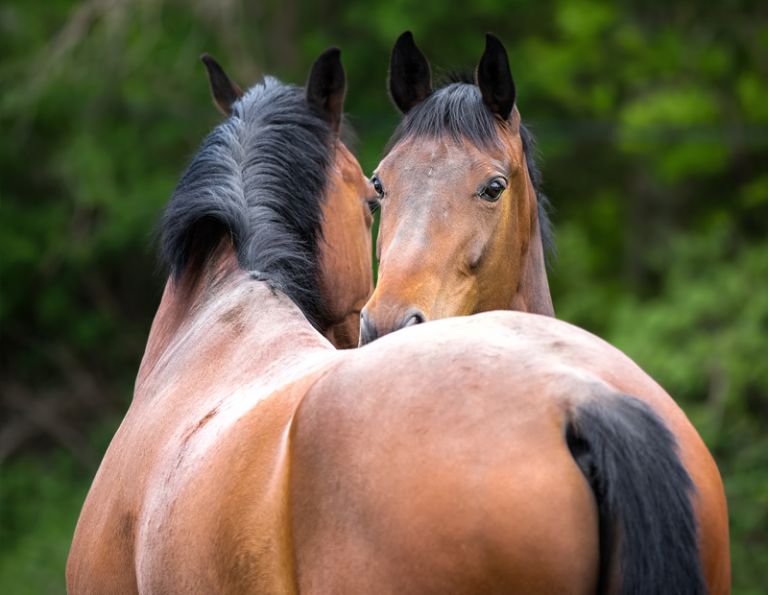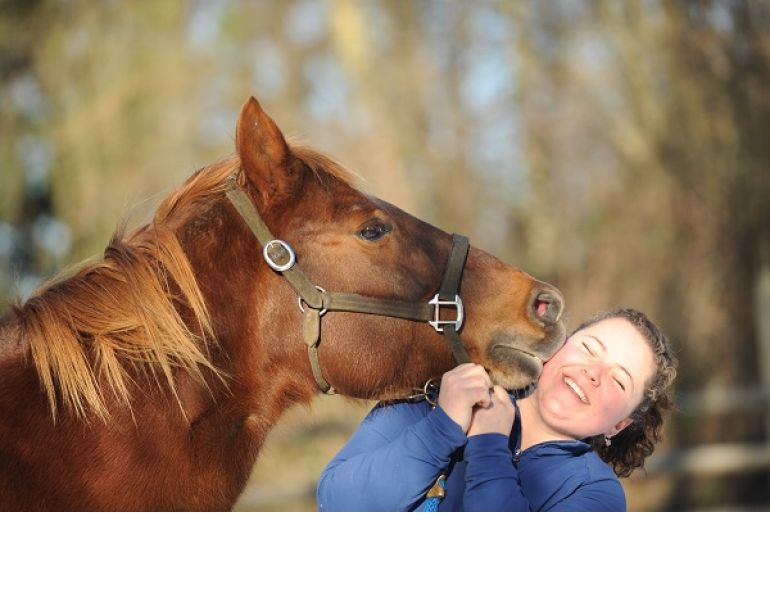By Judy Andrekson
Horse fever, horse crazy, bitten by the horse bug, horse madness: A condition usually associated with pre-teen and young teen girls, characterized by an obsessive love of horses. Symptoms: Incessantly talking, reading, writing, drawing, and daydreaming about horses; collecting horse posters, magazines, models and horse art in excess; living for the moments when horses can be touched, smelled, ridden, or simply in close proximity.
Treatment: Later teen years (boys!), school, marriage, children, career, lack of money, and lack of time.
Cure: None.
“Horse fever” can never really be cured, it simply lies dormant until the conditions are right for the madness to return. A growing number of middle-aged women are taking up horsemanship and riding for the second time in their lives, proving that once you are bitten by the horse bug, it will always be in your blood. Different catalysts prompt the resurgence of the fever, but the result is almost always the same — a fulfilled, life-embracing, happy, and healthy older woman.
Mary Comstock was bitten by the horse bug when she was nine years old and saw the Mounted Police patrolling Point Pleasant Park in Halifax, Nova Scotia. She became so obsessed that she even pretended to be a horse for a while! When she was 11 years old, she started taking lessons with the Halifax Junior Bengal Lancers. She rode with them for two years until a riding accident left her with a serious head injury and badly shaken confidence. Her love of horses didn’t go away, but it would be almost four decades later, after university, marriage, children, and moving out west, before she would make it back into the saddle. In 2009, she found a patient instructor who helped her to gradually regain her confidence and rediscover the joy of riding.
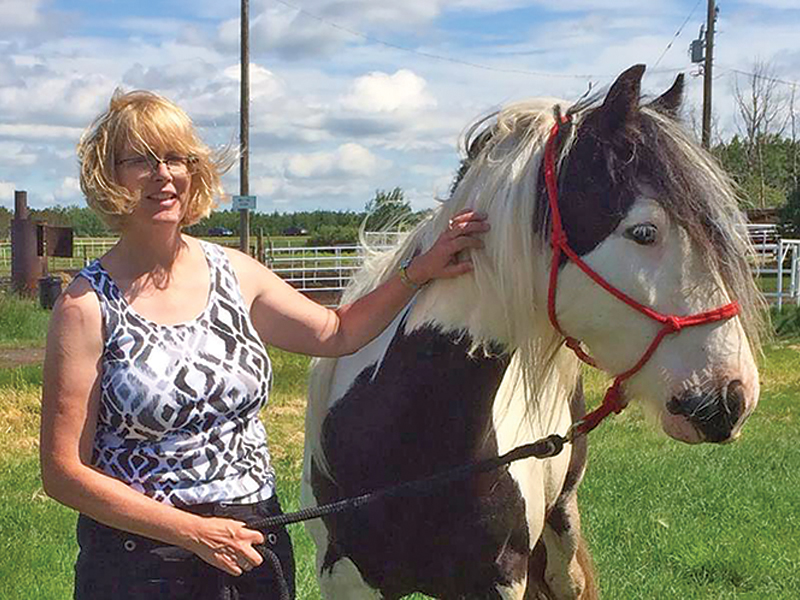
Mary Comstock and Stormy. Photo: Judy Andrekson
At age 53, she purchased a Gypsy Vanner gelding named Stormy. The pair has been getting out of the arena and onto the trails together, even trying their hand at competitive trail riding. Horse fever has again taken Comstock by full force now, and she loves every minute of it.
As a child, Doris Struck Quinn learned to ride on rented horses. At ten years old, with full-blown horse madness, no helmet, no lessons, alone in a field… she learned the feeling of flying for the first time and was hooked for life. She attended two weeks of lessons each year for three summers, but after her parents were in a serious car accident, 15-year-old Quinn had to grow up quickly and horses were put on the back burner. Forty years later, she accepted an invitation to a guest ranch weekend with a friend. The rides took her back to her childhood, and horse fever returned with a vengeance. She started to ride regularly at a ranch close to home. There, she fell in love with a hotheaded, black-and-white paint gelding named Ricky, and bought him a year later. Then in her sixties, Quinn and Ricky tried their hand at jumping lessons, but unfortunately a jumping accident left her with a broken wrist and cracked ribs. The incident would have stopped many her age, but the fever was still strong. So, when Ricky passed away in 2018, Quinn found a new partner named Chester. She now avoids the jumps and sticks to the trails, and there’s no end in sight for their adventures. For Quinn, joy comes in the connections she makes with her horse and the people around her.
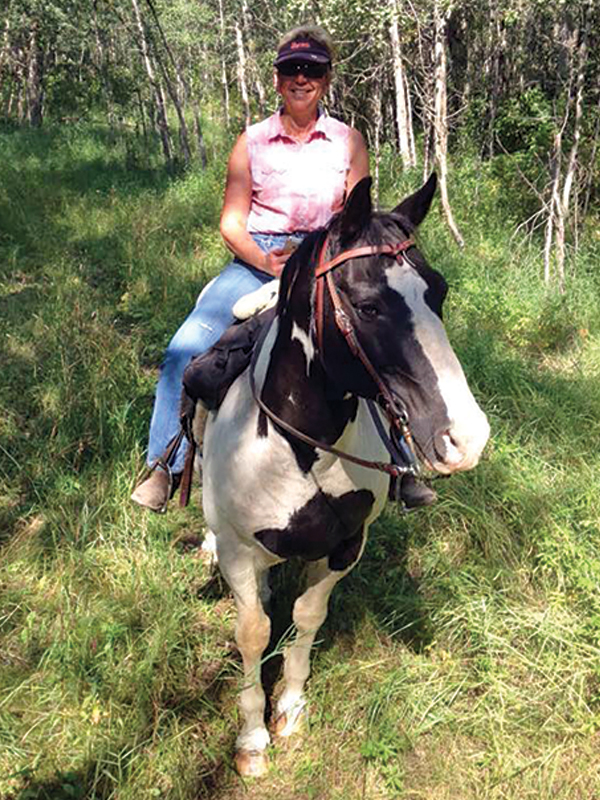
Doris Struck Quinn and Ricky. Photo: Judy Andrekson
“The needle on my gratitude metre is way, way up,” she says. “Even when life deals out terrible things to me, my heart is still full and joyous. And that is because of my horse.”
Riding instructor Karen Nelson of Ardrossan, Alberta, coaches many adult “re-riders,” as they are known in the industry, and advises them to go into their renewed adventure gradually. “Adults are often surprised by how sore they are after the first few lessons,” says Nelson. “Re-riders sometimes get frustrated because they know what is supposed to happen, but their body doesn’t want to cooperate. In time, their muscles lengthen and strengthen, and the task gets easier. On the plus side, although their bodies may be slower to cooperate, most adults are quicker to grasp concepts mentally and seem more likely than kids to understand the action-to-consequence relationship.”
Some adults had horse fever in childhood, but no opportunity to explore their passion until later in life. Judi Mendryk grew up in the city, obsessed with horses but believing they would never be a part of her reality. She thought them to be the most beautiful animals on earth, and she couldn’t get enough of them, but she never really imagined owning one. Her symptoms went dormant as adult life took over, until a small person in her future reawakened the passion.

Judi Mendryk and Porsch. Photo: Judy Andrekson
Mendryk was 42 when her 11-year-old daughter started showing an interest in horses and, one day, asked if she could take riding lessons. The resurgence of her old horse fever took Mendryk by surprise, and she signed her daughter up for lessons that very day. Mendryk attended every lesson her daughter took over the next five years, learning vicariously from the ground. About two years into her daughter’s riding career, she began casual trail riding with some friends, putting the theories she had been watching to practical use on the patient trail horses. Then, at age 16, Mendryk’s daughter lost interest and no longer wanted to ride, and she suddenly came face-to-face with the fact that horses had been her dream, not her daughter’s. She was now 47 years old and her horse fever was raging, so she decided to keep going on her own, bought her first horse — a black Morgan mare named Porsche — and became involved in endurance riding. For the first time in her life, Mendryk had pushed out of her comfort zone and found a place that belonged just to her — and it felt fantastic.
Having the passion for horses reemerge later in life can lead women down paths they never even dreamed were possible. One experience can lead to a revelation or even a new career. Sandy Bell had always loved horses, but was a late bloomer in the horse world. She was 47 years old when a friend convinced her to go on a four-day pack trip in Alberta’s Rocky Mountains. The ride was not meant for beginners and Bell had never been so sore, tired, or dirty in her life, but by the end of those four days the passion had reawakened, and she was solidly horse-mad.
Bell decided to take lessons and tried several different instructors and horses before settling into what felt most comfortable for her. She soon purchased one of the lesson horses, a young Percheron cross named Alaska. The mare was as green as Bell, and their combined lack of experience nearly ruined both of their riding futures. Green rider, green horse, big goals, a trainer who tried to solve their issues by adding increasingly severe equipment to the mare, and a general lack of horse/human communication equalled enormous difficulties, and an increasingly resistant and dangerous mare that no one wanted, leaving Bell very frustrated.
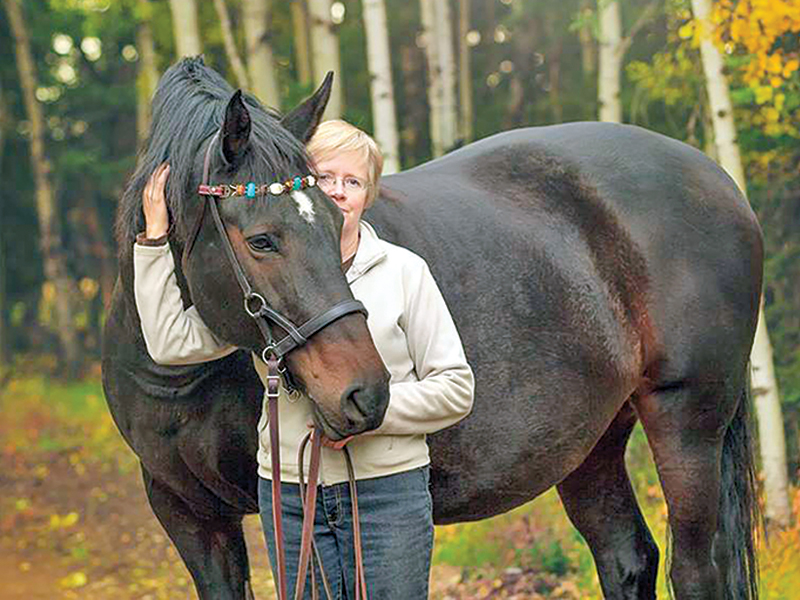
Sandy Bell and Alaska. Photo: Debby Herold
Giving up was tempting at times, but Bell’s instincts told her that something was wrong. She eventually found a trainer who took a gentler, more holistic approach with them, teaching her about herd dynamics and ground-level communication. The severe equipment disappeared and a happy partnership, based on trust, understanding, and forgiveness began to evolve.
For Bell, the experience was literally life-changing. She started sleeping better, with her mind engaged in learning new things. She found clarity of purpose and says the horses gave her “honest and immediate feedback in the moment.” She had been a self-described “jaded and cynical woman,” but now found herself connected to something bigger, more spiritual, and hopeful. She began taking courses in the field of equine assisted therapy and eventually gained her certificate as an Equine Assisted Personal Development Coach. She now runs Windhorse Retreat, near Rimbey, Alberta, where she and her horses teach people about communication, self-reflection, leadership, and goal setting on an emotional, physical, and spiritual level.
Despite their different motivations, or the spark that rekindled horse fever in each of these women, they all agree that the benefits of taking up riding and horsemanship later in life are huge and well worthwhile.
The physical benefits are far-reaching, and all of the women report an increase in strength, balance, and a general sense of well-being. The symptoms of Bell’s peri-menopause lessened, and Quinn’s chronic lower back issues became more manageable. Spending time outdoors, walking, grooming, lifting, leading, hauling water pails and hay bales, and riding, work a wide variety of muscles that are often under-used in middle-aged women. The reliance on core muscles for balance is of particular benefit, helping with “middle-age spread” and other issues common in women of this age group.
Riding and horse handling have positive mental benefits as well. Every one of these women conveyed the enormous stress-relieving effect that being around horses has for them. “Even just spending time grooming is good for the soul,” says Mendryk. “There’s nothing like the smell of a horse, or the feeling of calm that comes from being near them.”
According to Nelson, adults are more likely to bring work- or home-related stress with them to riding lessons and sometimes need help shifting gears. Warm-up exercises, such as shoulder rolls and deep breathing, helps them wind down and change their mental energy.
Mendryk, Bell, Quinn, and Comstock all found a new sense of confidence and pride, a new focus and purpose in their lives, at a time when their old roles were changing. Realizing old dreams, overcoming fears, setting new goals, and the constant learning involved in horsemanship made these women feel more alive and youthful than they had in years.
The social benefits are also valuable. “Making new friends and spending time with others who share the same passion is fun and exciting,” says Comstock.
“Horse people are CRAZY!” adds Mendryk. Finding people who share your crazy is always a good thing.
Horsemanship has deeper, spiritual benefits as well. “It’s a very surface experience as a kid,” explains Comstock. “It’s a challenge and a thrill, and a lot more about competition. As an older adult, it becomes more about the connections, the deeper communications, the quiet moments, and the peace.”
Quinn describes it this way: “Life is richer, multi-layered, and fantastic as an older woman. You appreciate everything so much more. Living with the honesty of the horses has enhanced that. We each give as much as we can to this relationship in the best way we can. There is a true connection there. I would not have known these things as a younger woman... you are given these things as gifts as you get older. It is counter-weighted with pieces of your body that hurt, but your emotions and brain will just keep getting better. There really aren’t sufficient words to describe my feelings or all of the benefits I’ve experienced through my time with horses.”
Thankfully incurable, horse fever can be the greatest of blessings for women as they head into their middle years of life. Physically, mentally, emotionally, and spiritually, they become stronger, better, more fulfilled, and complete. Perhaps it’s time to dust off those childhood dreams and get into the saddle. It’s never too late!
This article was originally published in Canada’s Equine Guide 2020, a special annual issue of Canadian Horse Journal
Main Photo: iStock/Pidjoe



